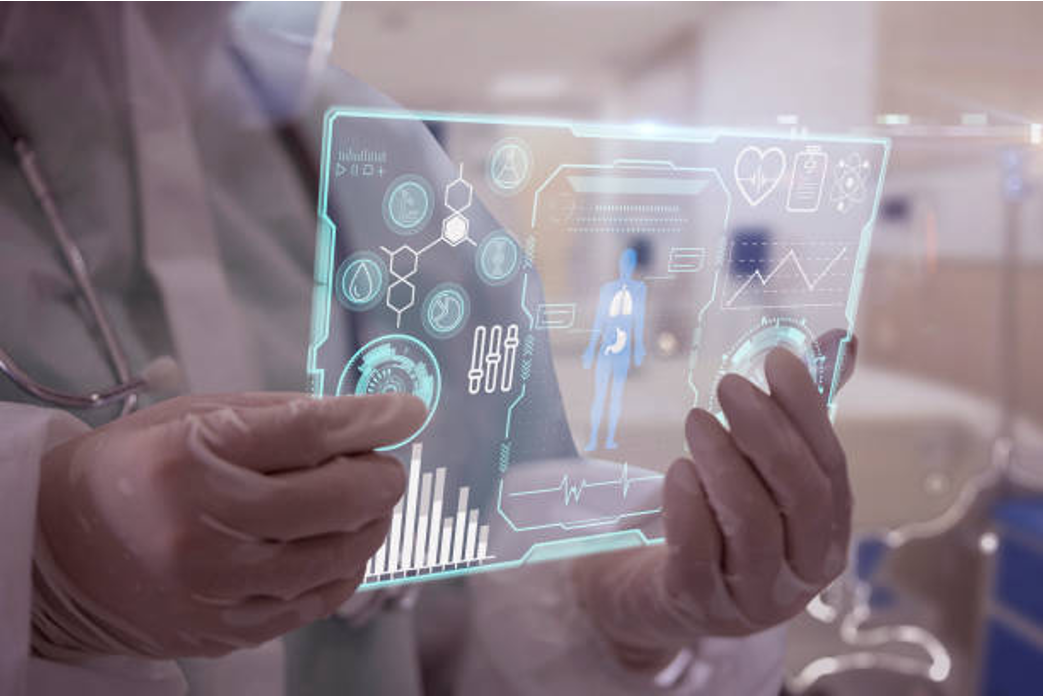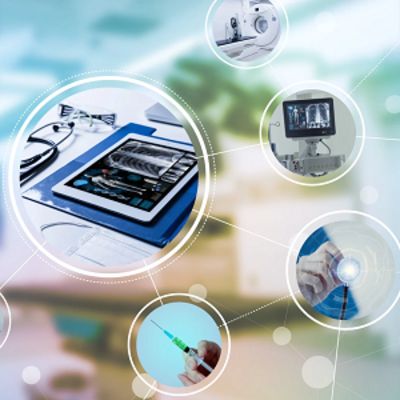It’s no secret that technological advances have completely revolutionised almost every industry - and the healthcare sector is no exception. The recent advent of digital health tools, such as online health courses, telehealth services, and wearable devices - coupled with some pretty momentous events - have transformed how healthcare services are delivered and managed, making healthcare more personal and accessible than ever.
In this helpful article, we'll delve deeper into the world of digital health technologies and devices and shine a light on these unsung heroes that have turned healthcare into something more than just waiting rooms and paperwork. We'll also break down the significant advantages they bring to the table for both patients and medical providers alike.
Ready for the ride? Let’s kick it off with telehealth - the superhero of remote healthcare!
Telehealth: From the Clinic to Your Couch
When the COVID-19 pandemic made global landfall in early 2020, the need to shift from in-person consulting to virtual methods became crucial as we strived to protect ourselves from the virus. What started as a necessity in the name of safety, telehealth quickly emerged as a popular digital health tool that allows patients to receive healthcare services remotely.
Thanks to telehealth, patients can now consult with healthcare professionals through video calls, phone consults, and secure messaging platforms - all without leaving the safety and comfort of their own homes. Not only does this technology provide convenience to both patient and provider, but the tool has expanded the reach of healthcare services to those in special circumstances - such as remote and disadvantaged communities, and for those patients suffering from mobility issues or lacking sufficient transportation.
Additionally (and critically), telehealth helps to minimise the spread of illness by allowing virtual consultations instead of attending a physical clinic when sick. For medical providers, the benefits of telehealth not only help them reach a broader patient population and extend their services beyond the brick-and-mortar, but remote monitoring apps and devices, in conjunction with digital communication methods, enable proactive and personalised care, fostering better patient outcomes and overall satisfaction.
Electronic Health Records: The Organised Brain of Healthcare
We're probably all familiar with medical records - running history of every patient's diagnosis, treatment, and visit summary. Gone are the days, however, of bulky folders crammed into overstuffed file cabinets. Instead, medical providers now favour electronic health records (EHRs), and just like their predecessors, these digital diaries are an essential tool in any healthcare setting.
EHRs provide several benefits to both patients and medical providers. They help improve continuity of care and reduce the likelihood of patient medical errors or misplacement of crucial documentation. For practitioners, EHRs streamline workflows, improve efficiency, and facilitate better communication and collaboration among healthcare teams who may not be located together. Additionally, many EHRs have built-in prescription ordering and secure chat platforms, and their searchability, accuracy, and immediacy promote faster and better-informed medical decision-making.
Today’s EHRs can often be integrated with other digital health tools, like telehealth, to provide a more comprehensive approach to patient care, and are also becoming an essential tool in the field of medical research and monitoring.

Patient Power: Enhancing Engagement
Now let’s talk about the star of the show - you, the patient! Digital health technologies are revolutionising patient care by empowering individuals to take a more active role in managing their health - and who doesn’t want to hold the keys to this proverbial kingdom?
The slew of available apps and wearable devices available today provide easy access to medical information, allowing users to track test results, refill prescriptions, and monitor health indicators like blood pressure, physical activity, and sleep trends. These tools can also enable an array of other customised services like physical therapy, nutrition, and mental healthcare treatments that would otherwise be administered via costly, in-person visits.
Smartphone apps can now track symptoms and manage chronic conditions, while online health courses aid prevention by increasing health literacy and awareness. So with this juicy, real-time data and personalised insight, individuals can tailor their healthcare to their specific needs and preferences, taking control of their health and well-being and empowering them to lead healthier lives.
The Final Diagnosis
In this article, we've looked at some of the wonderful advances in healthcare technology and explored the ways these tools are being actively used in the field. Now, it's time to recap the rewards that this technology is producing for both patients and medical providers alike.
Benefits for Patients
Embracing digital health tools brings a host of advantages, providing patients with a blend of convenience, accessibility, and a genuine sense of control.
These tools and technologies allow patients to access their health information and monitor their health conditions remotely, consult with healthcare professionals from home, and manage chronic conditions effectively. The seamless integration of these tools improves communication between patients and healthcare providers, leading to improved diagnoses and personalised treatment plans and empowering patients to adopt lifestyles that prevent illness and disease in the first place.

Advantages for Healthcare Providers
The benefits that digital health tools provide medical practitioners and other healthcare providers are significant.
One of the standout advantages of these technologies is the way they strengthen and enhance communication and collaboration. This isn't just about professionals talking to each other; it's about creating a space where healthcare teams and patients can connect seamlessly, leading to better outcomes for everyone involved.
Take telehealth, for instance. It's not simply a tool for remote consultations; it's about ensuring that patients anywhere can get top-notch care from specialists without any of the obstacles (like travel, personal safety, and other costs) that in-person visits may cause. Just as a patient may receive a consultation from the comfort of their home, so too may a healthcare provider - thus enabling a more flexible and streamlined service for all involved.
When it comes to electronic health records and other apps, they're the friendly assistants making communication a breeze, enabling easy sharing of information and collaborative decision-making. These tools also empower providers to spot trends in patient data, allowing for more informed treatment decisions.
Digital health tools have completely transformed the healthcare industry, and it should come as no surprise that the advancement of these technologies and the development of new ones are only set to skyrocket, flipping the script on how we deliver and receive healthcare for years to come.
This article is part of the HealthManagement.org Point-of-View Programme.
Image Source: iStock














